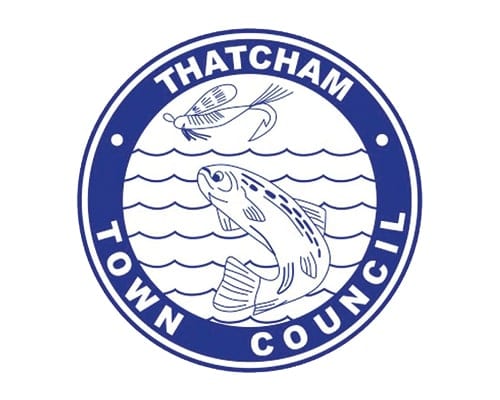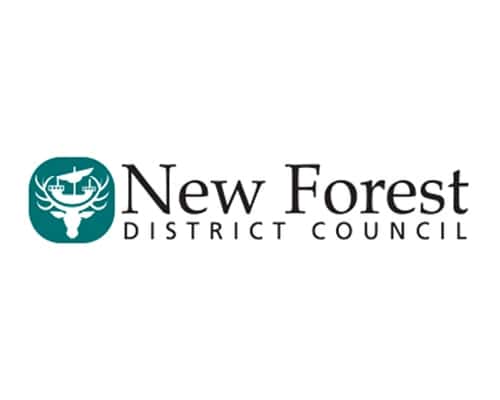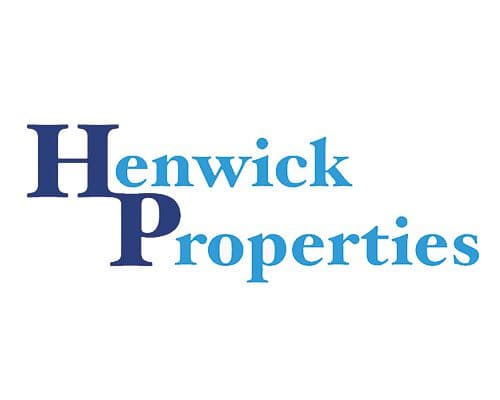Holiday lets are subject to legal fire safety requirements in order to ensure the safety of occupants during their stay. The owner of a holiday let is responsible for conducting a Fire Risk Assessment on the property and ensuring that appropriate fire safety measures are in place.

Holiday Lets and Parks are subject to legal Fire Safety requirements in order to ensure the safety of occupants during their stay. The owner of a Holiday Let/Park is responsible for conducting a Fire Risk Assessment on the property and ensuring that appropriate Fire Safety Measures are in place. These measures may include the installation of smoke alarms, fire extinguishers and emergency lighting, as well as ensuring that escape routes are clear and easy to navigate. The owner should also provide guests with clear instructions on what to do in the event of a fire, including evacuation procedures and the location of fire exits, which can be included in the sites Welcome Pack.
Regular maintenance and testing of the Fire Safety Equipment should also be carried out to ensure that it is functioning correctly. Failure to comply with legal Fire Safety requirements can result in serious consequences, including fines or even imprisonment. By taking Fire Safety seriously and implementing appropriate measures, Holiday Let/Park owners can ensure the safety of their guests and avoid potential legal repercussions.
LS Fire Solutions Ltd works with a number of national Holiday Park groups including Lovat Parks, Darwin Escapes, Mackland Parks, and Hardwick Parks as well as several individual Holiday Let properties providing Fire Risk Assessments and Fire Safety Advice.
Fire Safety Services targeted towards councils aim to ensure that council-owned buildings and facilities are safe for occupants and comply with Fire Safety Regulations. Councils have a legal obligation to carry out Fire Risk Assessments on their buildings and ensure that the appropriate Fire Safety Measures are in place. Fire Safety Services can help councils to conduct these assessments, identify potential fire hazards and implement appropriate safety measures. These measures may include the installation of smoke alarms, fire extinguishers, sprinkler systems and emergency lighting. Fire Safety Services can also provide staff training and assist in the development of Emergency Evacuation Plans to ensure that all occupants can evacuate safely in the event of a fire.
Fire Safety Services can also help councils to monitor and maintain their Fire Safety systems to ensure that they are functioning correctly and are up to date with current regulations. By working with Fire Safety Companies, councils can ensure that their buildings and facilities are safe for occupants and comply with fire safety regulations.
LS Fire Solutions Ltd have worked with several councils including Winchester City Council to provide a variety of Fire Safety Services such as Fire Risk Assessments, Fire Compartmentation Surveys and Fire Strategy Plans.


Care homes have a legal responsibility to ensure the safety of their residents with regards to Fire Safety. Care home owners or managers must either carry out a Fire Risk Assessment themselves or arrange for one to be undertaken by a trained professional in order to identify any potential fire hazards and implement appropriate Fire Safety Measures.
These measures may include the installation of smoke alarms, fire doors, and sprinkler systems, as well as ensuring that escape routes are clear and easily accessible. Staff should also receive regular training on Fire Safety procedures, including evacuation plans and the use of fire extinguishers.
It is important that residents are informed of the Fire Safety procedures and are involved in fire drills to ensure that they are familiar with the procedures. Regular maintenance and testing of the Fire Safety Equipment is also essential to ensure that it is functioning correctly. Failure to comply with legal Fire Safety responsibilities can result in serious consequences, including fines or even imprisonment, as well as putting the lives of vulnerable residents at risk. Care homes must take Fire Safety seriously and implement appropriate measures to ensure the safety of their residents.
LS Fire Solutions Ltd specialise in offering Fire Safety Services to the Healthcare and Care Home sectors. The team have worked with a wide range of Care Home and Assisted Living facilities offering Fire Risk Assessments, Fire Safety Training, Evacuation Aids and Evacuation Aid Training, Fire Evacuation Strategies and Consultancy. We pride ourselves on offering the best possible service and advice to allow our clients to keep their residents safe in the event of a fire related emergency.
HMOs, Estate Agents and Landlords have a legal responsibility to ensure that their properties meet Fire Safety Regulations in order to protect the safety of their tenants.
Fire Safety Services for HMOs, Estate Agents and Landlords may include Fire Risk Assessments, installation and maintenance of smoke alarms and fire extinguishers and the implementation of appropriate Fire Safety Measures such as fire doors and escape routes.
Regular testing and maintenance of Fire Safety Equipment is also essential to ensure that it is functioning correctly. Additionally, staff and tenants should receive regular training on Fire Safety Procedures, including evacuation plans and the use of fire extinguishers.
Failure to comply with the Fire Safety Regulations can result in serious consequences, including fines or even imprisonment. By working with Fire Safety Services, HMOs, Estate Agents and Landlords can ensure that their properties are safe and compliant with the Fire Safety Regulations, protecting the safety of their tenants and avoiding potential legal repercussions.
LS Fire Solutions Ltd have worked with a variety of Estate Agents and Landlords to ensure that their properties are considered compliant with the relevant legislation. These properties have ranged from HMO’s, single dwelling lets to larger blocks of flats, including high-rise buildings.


Home Fire Safety Checks are an essential tool in identifying and addressing potential fire hazards within a household. These checks are usually carried out by trained professionals who will visit homes and assess the Fire Safety Risks present.
The aim of the checks is to identify potential hazards such as overloaded sockets, unattended candles or faulty electrical equipment and provide advice and guidance to homeowners on how to reduce the risk of fire in their home.
Fire safety professionals may also provide homeowners with Fire Safety Equipment, such as smoke detectors and carbon monoxide alarms, and offer guidance on how to properly maintain and test this equipment. By carrying out home Fire Safety Checks, households can identify and address potential fire hazards, reducing the risk of fire and ensuring the safety of occupants within the home.
Home Fire Safety is often an overlooked area of Fire Safety, but with so many unfortunate fire incidents in homes each year it is vitally important to understand the risks present in your space and how to mitigate these.
Protect your property and occupants with LS Fire Solutions' expert fire safety solutions.
There is not a company I would trust more to carry out our fire risk assessments than LS Fire Solutions

LS Fire Solution provided us with a great cost savings against our previous company contract. Great work.

We always use LS Fire solutions for our fire assessment needs. Excellent service given every time.

Great working with a local business for our fire risk assessments and extinguisher servicing

For home use, a multi-purpose fire extinguisher rated for Class A, B, and C fires is recommended. These extinguishers can handle common fires involving wood, paper, flammable liquids, and electrical equipment. To use it properly:
Remember the acronym "PASS":
Pull the pin.
Aim the nozzle at the base of the fire.
Squeeze the handle to release the extinguishing agent.
Sweep from side to side, covering the fire with the extinguishing agent.
Stand approximately 6-8 feet away from the fire and approach it cautiously.
After the fire is extinguished, watch for re-ignition and evacuate if necessary.
A home fire escape plan should include:
1.Identifying primary and secondary escape routes from each room.
2.Designating a meeting point outside.
3.Ensuring windows and doors open easily.
4.Assigning responsibilities for helping young children, elderly, or pets.
5.Teaching family members to feel doors for heat before opening.
6.Practicing low crawling to avoid smoke inhalation.
Review and practice the plan with your family at least twice a year, or whenever changes occur in the household or home layout. Conduct drills at different times of the day and simulate various scenarios to ensure everyone knows what to do in case of a fire emergency.
The most common causes of house fires include cooking accidents, heating equipment malfunctions, electrical faults, smoking-related incidents, and candles left unattended. To prevent these fires:
1.Never leave cooking unattended and keep flammable items away from the stove.
2.Maintain heating equipment and chimneys regularly.
3.Use electrical appliances and cords properly, avoiding overloading outlets.
4.Smoke outside and dispose of cigarettes properly.
5.Keep candles away from flammable materials and extinguish them before leaving the room.
6.Install smoke detectors on every floor and test them regularly.
7.Have a fire extinguisher and know how to use it.
Please contact us for more information
Preventing kitchen fires and ensuring safe cooking practices involve several key measures:
1.Never leave cooking unattended, especially when using high heat.
2.Keep flammable items like towels, pot holders, and curtains away from the stove.
3.Regularly clean cooking appliances, grease traps, and exhaust hoods to prevent grease buildup.
4.Use caution when cooking with oil and never throw water on a grease fire.
5.Keep a fire extinguisher rated for kitchen fires within easy reach.
6.Install and regularly test smoke alarms in the kitchen and throughout the home.
7.Educate household members about fire safety and emergency procedures.
Teaching children about fire safety is crucial for their well-being. Start by explaining the dangers of fire in an age-appropriate manner, emphasising the importance of never playing with matches or lighters. Show them how to safely extinguish candles and cook with adult supervision. Practice fire drills at home, teaching them escape routes and meeting points outside. Demonstrate how to stop, drop, and roll if clothing catches fire. Use educational resources like videos, books, or games to reinforce key concepts. Encourage open communication about fire safety and address any questions or concerns they may have. Be a positive role model by practicing fire safety yourself.